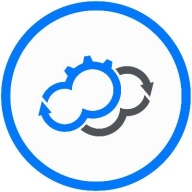

CloudSphere and Cloudify both compete in the cloud management domain. CloudSphere seems to have an edge in pricing and support areas, whereas Cloudify is favored for its feature richness.
Features: CloudSphere provides automation and resource management, comprehensive visibility, and control over environments. Cloudify offers strong scalability, orchestration capabilities, and extensive customization options, excelling in complex infrastructures.
Room for Improvement: CloudSphere could enhance its server stability and minimize latency issues further. Providing better error handling and broader multi-cloud integrations would be beneficial. Cloudify could improve by simplifying its interface, expanding its native plugin offerings, and reducing the complexity required for advanced customizations.
Ease of Deployment and Customer Service: CloudSphere is noted for its straightforward setup and effective customer support facilitating smooth transitions. Cloudify's flexible deployment models and detailed support resources cater to organizations needing precise control over deployments.
Pricing and ROI: CloudSphere generally offers lower initial costs, attractive to budget-conscious organizations with rapid ROI. Cloudify, with potentially higher startup expenses, provides significant value through its comprehensive features, resulting in strong long-term ROI.
| Product | Market Share (%) |
|---|---|
| Cloudify | 1.8% |
| CloudSphere | 1.0% |
| Other | 97.2% |


| Company Size | Count |
|---|---|
| Small Business | 3 |
| Large Enterprise | 6 |
Cloudify is an open-source orchestration-first cloud management platform. The solution allows applications to efficiently run across multiple cloud or data center platforms for premium multi-cloud infrastructure automation and orchestration. It provides infrastructure automation using environment as a service (EaaS) technology to deploy and continuously manage any cloud, private data center, or Kubernetes service from one central point while leveraging existing toolchains.
Cloudify Product Highlights
Cloudify Features
Cloudify has many valuable key features. Some of the most useful ones include:
Cloudify Benefits
There are many benefits to implementing Cloudify. Some of the biggest advantages the solution offers include:
CloudSphere is an intelligent cloud management platform that enables organizations to plan, optimize, secure, and scale their cloud adoption. The platform has three solutions to help organizations manage dynamic, multi-cloud environments, including cloud migration planning, cloud cost management, and cloud security posture management. By using application intelligence (AI), the platform is able to discover and collect all of the data points that collectively define an application across on-premises, hybrid, and cloud environments. Because the solution is very scalable, it can accommodate companies of all sizes.
The CloudSphere solution is ideal for:
CloudSphere Product Highlights
CloudSphere Features
CloudSphere has many valuable key features. Some of the most useful ones include:
CloudSphere Benefits
There are many benefits to implementing CloudSphere. Some of the biggest advantages the solution offers include:
We monitor all Cloud Management reviews to prevent fraudulent reviews and keep review quality high. We do not post reviews by company employees or direct competitors. We validate each review for authenticity via cross-reference with LinkedIn, and personal follow-up with the reviewer when necessary.